This was published 5 years ago
Boeing 747: Why the jumbo jet was designed with a hump and four more things you didn't know about the plane
By Michael Gebicki
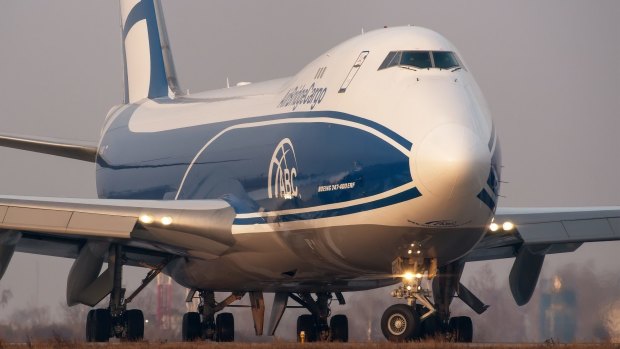
Boeing 747: The aerodynamic design of this popular aircraft resulted in its trademark teardrop-shaped hump.Credit: Shutterstock
On February 9, 2019, it will be 50 years since the first Boeing 747 took to the skies. Since its first passenger flight, in 1970, it has become the most successful commercial jet aircraft built. More than 1500 747s have rolled out of Boeing's Everett production facility, they've carried more than 3.5 billion passengers and flown the equivalent of 70,000-plus trips to the moon and back. Chances are you've flown aboard a 747 several times, yet there are a few things about the aircraft that might come as a surprise.
How the Boeing 747 got its hump
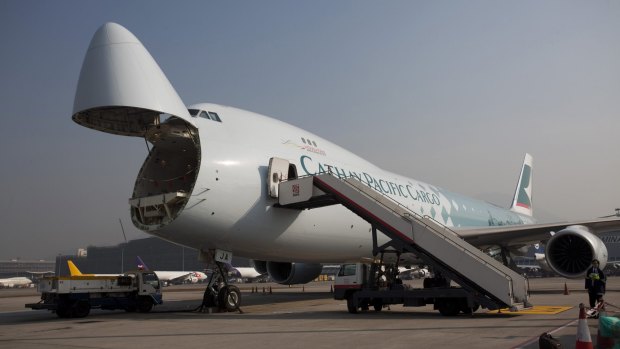
Credit: Bloomberg
Boeing's 747 was conceived as a multi-purpose aircraft, both as a passenger carrier and a cargo aircraft. In the 1960s, when the 747 was on the drawing boards, it was believed that supersonic aircraft were the future of passenger flights. If that proved the case, the 747 might be relegated to the role of a heavy-duty cargo aircraft.
To allow for that option the 747 was designed with a flip-up nose with a hinge at the top making it possible to load and unload even large cargo items quickly. However, the cockpit was in the way so designers added the hump and put the cockpit up there. The most aerodynamic design proved to be a teardrop-shaped hump and that gave the 747 its upper level. And as history proved, the 747 turned out to be one of the most successful aircraft that ever flew, while supersonic flight failed to gain traction.
A revolutionary power plant
The Boeing 747 was the first aircraft to be fitted with high-bypass turbofan jet engines. Turbofan engines, in which most of the air that enters the intake bypasses the core engine where combustion takes place, began replacing the far smaller turbojet engines on commercial aircraft in the 1960s.
These were low-bypass turbofans, which produce more jet thrust relative to fan thrust. High-bypass turbofans produce greater fan thrust relative to their jet thrust. They're also quieter – anyone who lives under a flight path can hardly forget the screaming jet engines of the past – they're more powerful and they offer improved fuel efficiency.
After a design competition, Pratt & Whitney was awarded the contract for the 747's engines and developed the JT9D engine. The JT9D produced 43,500 pounds of thrust, more than twice that of the engines used to power the Boeing 707 or Douglas DC-8, the workhorses of the day. Built extensively from titanium and nickel alloys, the JT9D was the precursor of the high-bypass turbofan engines that power all larger modern commercial jet aircraft but the test phase was hampered by engine stalls and damage to the turbine casings.
The 747's first commercial service, a Pan Am flight between New York and London on January 22, 1970, was cancelled due to engine overheating. A substitute aircraft was eventually deployed, and the flight took off six hours behind schedule.
The 747 could have bankrupted Boeing
The 747 was a revolutionary aircraft, and development costs were astronomical. Its sheer size meant that just about everything about it – the airframe, the cockpit, the landing gear – required fresh thinking. Boeing had to create a special facility large enough to build the aircraft. Eventually they settled on a site at Everett, 50 kilometres north of Seattle. The production facility still holds the record for the world's largest building by volume, which now stands at more than 13 million cubic metres. Some 16 MCG playing fields could fit comfortably inside. When it was first built clouds would form inside its ceiling, a problem solved by a new air circulation system.
Boeing's up-front investment in the 747 totalled more than $1 billion, yet constant injections of bank funds were required to keep the project alive. Boeing eventually took on a debt of more than $US2 billion to develop the 747, leaving it burdened with more debt than any other corporation in history at the time. In today's terms, that would be close to $US14 billion.
As time would tell, Boeing's huge gamble paid massive dividends, and the company held a stranglehold on the production of supersize passenger aircraft until the arrival of the A380, which carried its first passengers in 2007, 37 years after the 747 took paying passengers into the skies.
The presidential plane
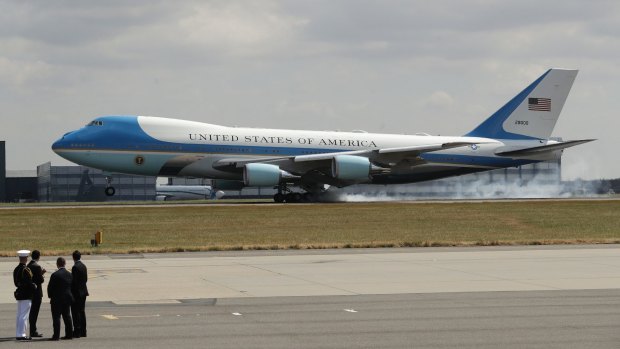
Credit: AP
The 747 has long been the favoured long-distance conveyance for some heads of state, the big timers as well as those with an inferiority complex, plus a few crackpot dictators. As well as the heads of state of China and Japan, the rulers of Kuwait, Brunei, Oman and Morocco all have Boeing 747s in their executive fleet.
Former President Saddam Hussain had a personal Boeing 747SP, the stubby, long-range version, for his personal travels.
The most famous of all the presidential 747s is Air Force One, used by the US president, which joined the ranks of the executive fleet in 1990 during the administration of George H.W. Bush. That aircraft boasts a number of refinements that you won't find on a typical 747. The triple-deck aircraft includes a suite for the president with a large office, bathroom and conference room, a medical suite that can function as an operating room, with a physician permanently on standby and two galleys that can feed 100 people at a time.
The onboard electronics, hardened against an electromagnetic pulse, enable the US president to continue to perform his or her duties in the event of an attack on the US.
Plans to replace the original presidential 747s were scuttled by Donald Trump when he balked at the replacement cost – almost $US4 billion. Instead the president will get a pair of almost-new Boeing 747-8 aircraft, originally destined for Russian carrier Transaero until that airline went bankrupt.
Some weird and wonderful adaptations
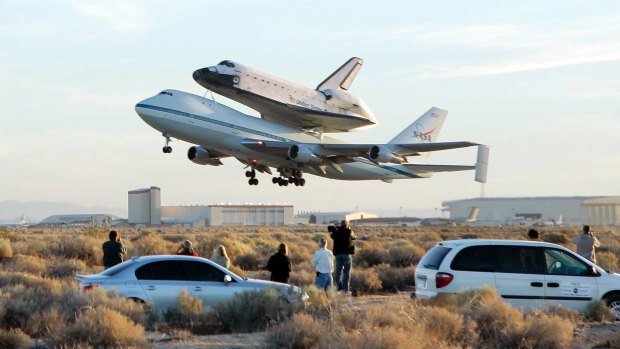
Credit: AP
As well as ferrying billions around the globe, 747 aircraft have been called upon to perform some unusual duties. A 747 was officially designated a Space Shuttle Aircraft and used to "piggyback" the Space Shuttle between its landing sites and the Kennedy Space Centre. It was the first Shuttle Carrier Aircraft, SCA 905, that carried the Space Shuttle Enterprise aloft and released it mid-flight, allowing it to glide and land under its own control.
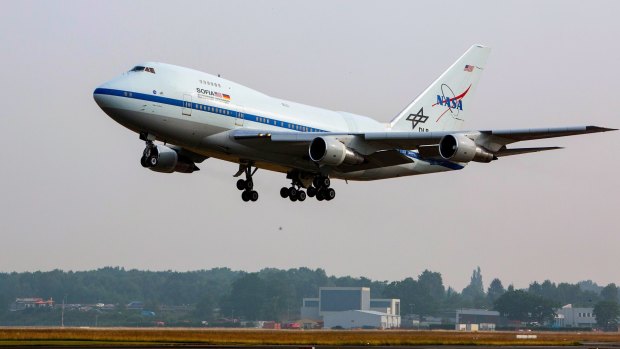
Credit: NASA
The Stratospheric Observatory for Infrared Astronomy (SOFIA) is an airborne observatory housed in a radically modified Boeing 747SP. A joint project of NASA and the German Aerospace Centre, the SOFIA 747 carries a 2.7-metre reflecting telescope designed for infrared astronomy. The telescope is revealed at cruise altitude, when a large door opens in the aft section of the aircraft.
The German Aerospace Centre defines SOFIA's role as "to understand the development of galaxies and the formation and evolution of stars and planetary systems from interstellar clouds of gas and dust". At ground level, water vapour in the troposphere hinders observations in the infrared. By flying in the dry, blue skies at altitudes above 12 kilometres, SOFIA's 747 escapes almost all our planet's atmospheric water vapour. Nightwatch is a military program with the official title of E-4 Advanced Airborne Command Post, which uses four Boeing 747 aircraft.
These aircraft serve as survivable mobile command posts in the skies for the US president and the secretary of defence, a strategic command and control centre that allows the United States military to continue to fight even after a devastating nuclear ground attack. When the president travels outside North America, an E-4 is deployed to a nearby airport, just in case the call comes.
See also: Airline ditches half its A380s: Why no one wants the superjumbo
Sign up for the Traveller newsletter
The latest travel news, tips and inspiration delivered to your inbox. Sign up now.